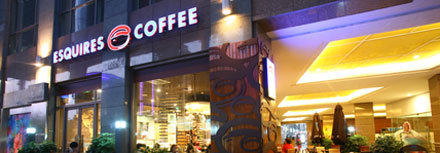
Not many creatives can make a full-time business out of doing what they love, but John MacDonald has pulled it off for half a century. Even more surprising, his creative focus is retail. And 50 per cent of his work is international.
MacDonald started out working after school in a department store visual merchandising team when he was 13, and took on the job full time at 16.
He got into retail store design, graphics and brand management and in 1990 founded Design Environments, a retail-focussed interior design company, originally based in Tauranga.
The challenge at the time was trying to get New Zealand store design to the level of other countries, he says. New Zealand design was mundane compared to what stores overseas offered, 1980s shopping malls were “dismal”, and there was almost no one offering a total retail design package.
Mostly shops had no distinguishing factors beyond the sign on the outside.
Design Environments now has a client base including coffee house franchise Esquires, Godfrey’s vacuum and cleaning, and the Bed, Bath and Beyond chain.
Some clients have been with the company for over 15 years, and these days half the stores MacDonald works on are overseas. International projects have their own challenges, he says.
“There was one time when I designed a shoe store in Hong Kong [where the average person is 8cm smaller than in New Zealand], and didn’t realise I’d put the top shelf up too high. It was just something that hadn’t occurred to me until I realised the customers were all craning their necks.”
Then there are the challenges of designing a coffee shop at a military base in the middle of the desert outside Abu Dhabi, where families have to be separated from single men and where MacDonald wanted to create the impression of al fresco dining without exposing anyone to the searing temperatures outside.

Design Environments’ internationalisation owes much to the expansion of the company’s biggest client: Esquires. The chain has opened 18 coffee houses in China and the Middle East, and MacDonald is currently designing cafés in England and Ireland.
Esquires owner, Cooks Global Foods, bought Design Environments in January this year, so MacDonald will be part of the coffee shop’s planned expansion into Canada and the US too. Early in the Esquires growth, Design Environments shipped prefabricated cafés from New Zealand to the Middle East. But now most of the materials are sourced locally, MacDonald says.
“What we are taking to the world now is our intellectual property developed here in New Zealand by talented New Zealanders. After visiting the proposed sites, we do the design in-house and make a virtual 3D model which is then sent on to the territory manager,” MacDonald says.
“We take on board any comments and then turn the design into CAD construction drawings which are then sent offshore. Simple as that.”
The company now has six staff, and MacDonald (now 68, but not intending to retire any time soon) plans to hire more architectural design talent as the expansion of Esquires proceeds.
But is store creation really art? MacDonald says retail design has gone from mundane to theatrical, to minimalist, to a current industrial aesthetic, but in a more refined and professional way.
Then there’s lighting, sustainability, branding and psychology. For example, the position of the counter in a store is a statement about whether a brand puts customer service or sales first, MacDonald says.
“When you manage to pull it off, it’s very satisfying.”




